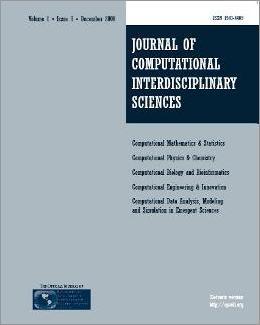
Editorial Office:
Management:
R. S. Oyarzabal
Technical Support:
D. H. Diaz
M. A. Gomez
W. Abrahão
G. Oliveira
Publisher by Knobook Pub


Editorial Office:
Management:
R. S. Oyarzabal
Technical Support:
D. H. Diaz
M. A. Gomez
W. Abrahão
G. Oliveira
Publisher by Knobook Pub
doi: 10.6062/jcis.2012.03.03.0063
D. M. Faes.
The use of Python is noticeably growing among the scientific com- munity, and Astronomy is not an exception. The power of Python consists of being an extremely versatile high-level language, easy to program that combines both traditional programming and data reduction and analysis tools. Here I make a brief introduction to Python, mentioning a few programming practices implemented in the language and some of its useful features on the process of data manipulation. I cover in a little more detail the standard scientific libraries (NumPy and SciPy) for data handling, the graphical library (Matplotlib), and tools for specific use in astronomy (PyFITS and PyRAF). Good pro- gramming practices and how they are implemented at the language are also viewed. Python resources and references are mentioned through- out the text for those who wish to go deeper and make use of the power of the language.
Programming language: Python, Data analysis and visualization, Computing resources.
[1] Luszczek, P., & Dongarra, J. 2007, International Journal of High Performance Computing Applications, 21, 360
[2] Magee, D. K., Bouwens, R. J., & Illingworth, G. D. 2007, Astronomical Data Analysis Software and Systems XVI, 376, 261
[3] Alwall, J., Herquet, M., Maltoni, F., Mattelaer, O., & Stelzer, T. 2011, Journal of High Energy Physics, 6, 128
[4] HOM, E. F. Y., MARCHIS, F., LEE, T. K., HAASE, S., AGARD, D. A., & SEDAT, J. W. 2007, Journal of the Optical Society of America A, 24, 1580
[5] NOORDAM, J. E., & SMIRNOV, O. M. 2010, Astronomy and Astrophysics, 524, A61
[6] COTTON, W. D. 2008, Publications of the Astronomical Society of the Pacific, 120, 439
[7] SAGE: Open Source Mathematics Software. 2011,http://www.sagemath.org/
[8] PYNBODY - A Python Toolkit for Astrophysical N-Body Simulation.2011, https://github.com/GuilhermeFerrari/PyNbody/
[9] ENTHOUGHT Python Distribution. 2011,http://www.enthought.com/products/epd.php
[10] ESO - The Scisoft Software Collection. 2011,http://www.eso.org/sci/software/scisoft/
[11] SPACE TELESCOPE SCIENCE INSTITUTE: Software & Hardware. 2011, http://www.stsci.edu/resources/software hardware/
[12] SCIPY , 2011. http://www.scipy.org/
[13] MATPLOTLIB: Python plotting, 2011. http://matplotlib.sourceforge.net/
[14] TOSI, Sandro. Matplotlib for Python Developers, 2009. Packt Publishing.
[15] PEP: Python Enhancement Proposals. 2011, http://www.python.org/dev/peps/
[16] APLPY Home Page. 2011, http://aplpy.github.com/
[17] ASTROGRID, Virtual Observatory Software. 2011,http://www.astrogrid.org/